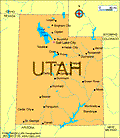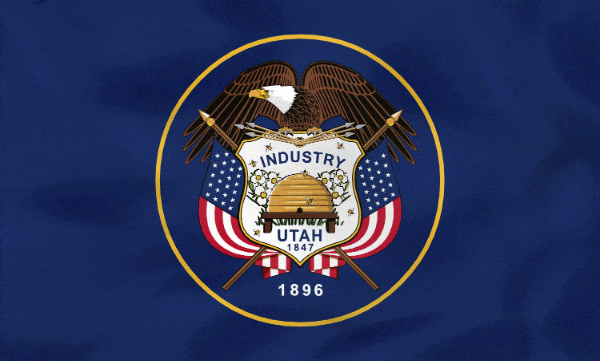 History The region was first explored for Spain by Franciscan friars Escalante and Dominguez in 1776. In 1824 the famous American frontiersman Jim Bridger discovered the Great Salt Lake. Fleeing religious persecution in the East and Midwest, the Mormons arrived in 1847 and began to build Salt Lake City. The U.S. acquired the Utah region in the treaty ending the Mexican War in 1848, and the first transcontinental railroad was completed with the driving of a golden spike at Promontory Summit in 1869. Mormon difficulties with the federal government about polygamy did not end until the Mormon Church renounced the practice in 1890, six years before Utah became a state. Rich in natural resources, Utah has long been a leading producer of copper, gold, silver, lead, zinc, and molybdenum. Oil has also become a major product. Utah shares rich oil shale deposits with Colorado and Wyoming. Utah also has large deposits of low sulphur coal. The state's top agricultural commodities include cattle and calves, dairy products, hay, greenhouse and nursery products, and hogs. Utah's traditional industries of agriculture and mining are complemented by increased tourism and growing aerospace, biomedical, and computer-related businesses. Utah is a great vacationland with 11,000 mi of fishing streams and 147,000 acres of lakes and reservoirs. Among the many tourist attractions are Arches, Bryce Canyon, Canyonlands, Capitol Reef, and Zion National Parks; Cedar Breaks, Dinosaur, Hovenweep, Natural Bridges, Rainbow Bridge, Timpanogos Cave, and Grand Staircase (Escalante) National Monuments; the Mormon Tabernacle in Salt Lake City; and Monument Valley. Salt Lake City hosted the 2002 Winter Olympics.
|
Utah
Read this profile of Utah to learn about the state's history, points of interest, and government. Also find interesting facts about each state, including the state's motto, symbols, and when it entered the union.





